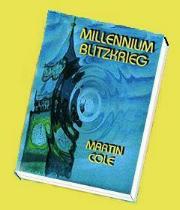Wednesday, May 02, 2012
DRAFT Press Release
(May 2012)
Salt,
wine and a safe port,
made
La Rochelle
into a familiar destination for North Europeans
The
publishers, le Croît vif are pleased to announce the release of the book, “La Rochelle - In the Footsteps of the Hanseatic
League”, by Thomas Brosset, and Maggie Cole, author of the
English text. Historical events, such
as, The Siege of La Rochelle, the story of the Four Sergeants, trade with the
New World in the 18th century, and with Africa in the early 20th
century, are all steeped in the fabric of the city. Less well-known and frankly
forgotten, is its membership in the medieval Hanseatic League – Europe’s first common market. Nevertheless, this chapter
of “Rochelaise” history contributes to its essence. This independent city, liberal
and rebellious, became famed within its region as a symbol of prosperity stemming
from its commercial talent.
In the
11th century, at a time when the roads were swollen by numerous
pilgrims, the market places were magnets, enlivened with various entertainers
to attract the public - bartering,
buying and selling ever more exotic products. Gradually, across Europe, associations, confederations, guilds and
brotherhoods were formed in order to regulate, harmonize and secure this trade,
especially that carried by sea. The most
powerful of these trade organisations was created in 1241, and was called the Hanseatic League. Bruges, London, Bergen, Lübeck, Novgorod,
and later La Rochelle
belonged to this forerunner of a common market. Set in a bygone era where
legality was uncertain, these cities formed a confederation of merchants
offering trade privileges and safe conduct between their members.
La Rochelle is the most southerly and furthest from the
centre, which lay in North Europe, around the Baltic Sea in a crescent from the
Baltic countries to Germany
and Holland.
Situated somewhat off the beaten track relative to the main Bruges
– Novgorod circuit, La
Rochelle, Brouage and the Bay of Bourgneuf,
nevertheless played a significant role in the organisation. Although the Salt Route is not
as well known as that of Silk, this route, laid the groundwork for
international trade. Centuries earlier, Vikings from Northern Europe had used
the shipping lanes from the Baltic, via the North Sea and the English
Channel, and sailed down the Atlantic seaboard in search of salt
for food preservation. But they also came to find wine. These two commodities
were the basis of La Rochelle’s
commercial relationship with the Hansa cities.
Home to
privateers, pirates, protestant defenders, and resistance members during the Nazi
Occupation, La Rochelle
has through the centuries shown a boldness that has shaped the proud and
independent character of the city. This rebellious spirit and determination has
allowed the city to shine worldwide by initiating new forms of international
trade. Its undeniable dynamism today translates into the success of its
international marina.
Far
from claiming to tell the long history of the Hanseatic
League – which others have done before – this book serves
primarily as an incentive to travel from city to city in the footsteps of the
Hansa. Starting in La Rochelle, the most
distant and southern-most, the less marked in stone by Hanseatic trade, and
perhaps the most often forgotten, Thomas Brosset takes his readers on a rich
and historical journey, up to the Norwegian fjords to the Baltic shores,
passing through the canals in Bruges, the City of London, to Lubeck’s cellars,
to Bergen’s multi-coloured quay-side houses, and to bewitching Novgorod, the
gateway to Asia.
*
*
*


0 Comments:
Post a Comment
<< Home